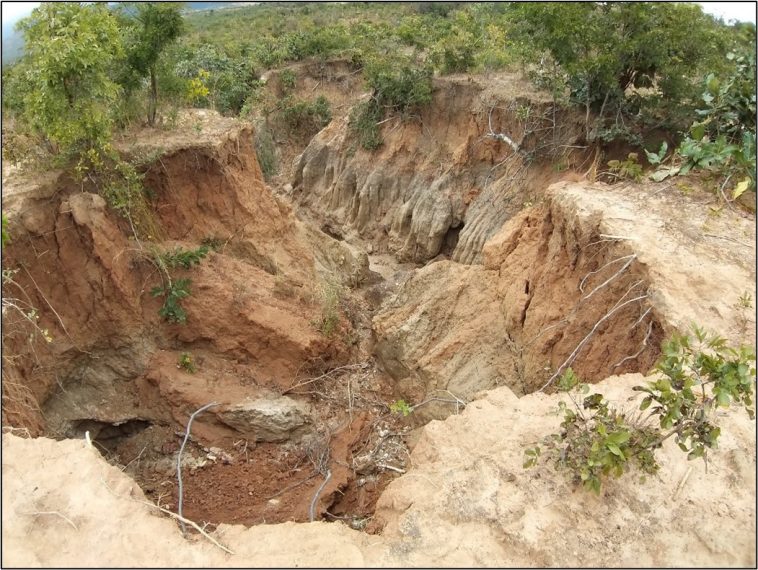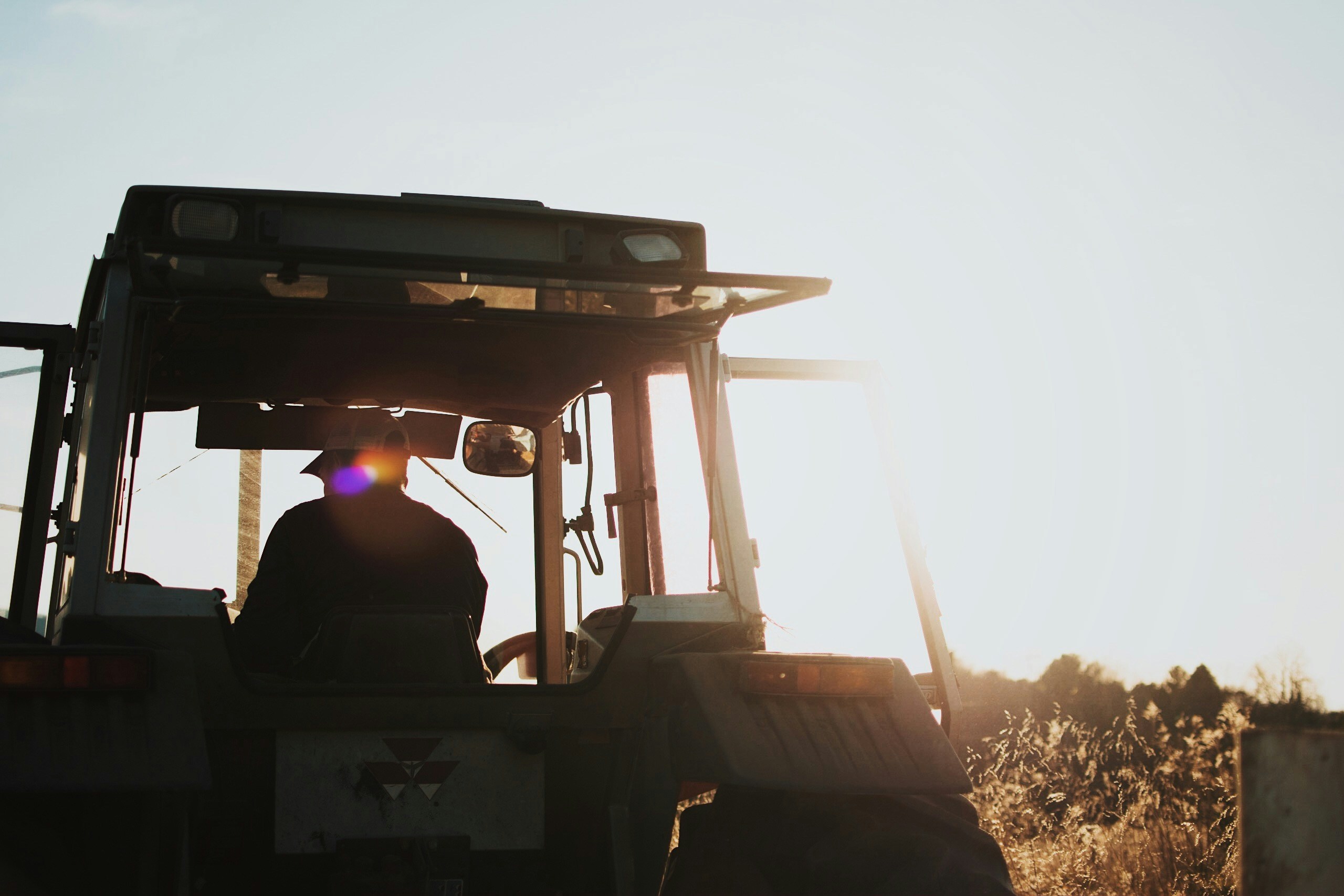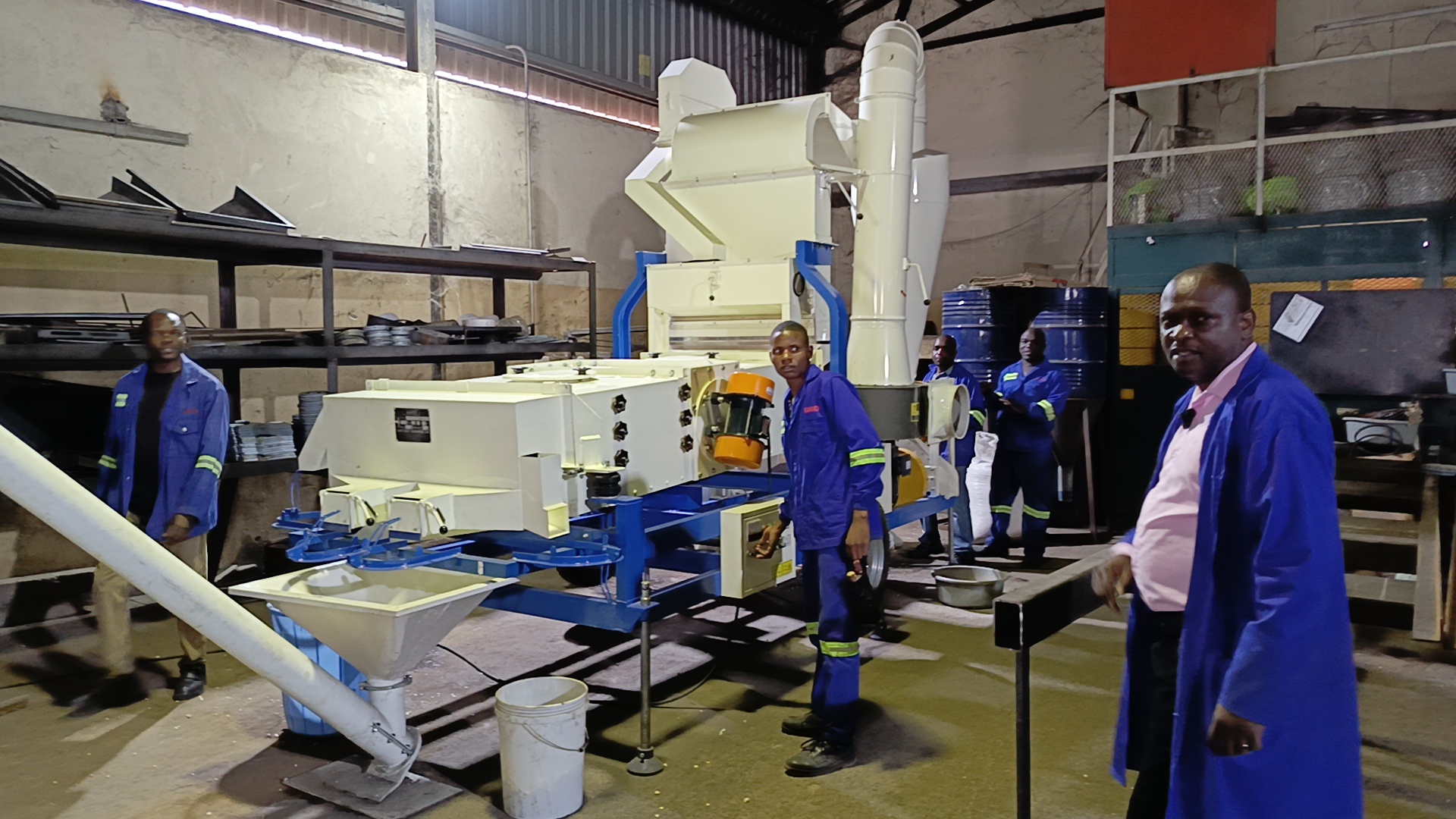Tree harvesting has left the Miombo woodlands in northern Malawi denuded of trees, resulting in major soil erosion.
Ken Coetzee of Conservation Management Services, based in George, visited the area, and concluded that an approach based on the Community Based Natural Resource Management (CBNRM) principles could be useful in solving the serious environmental and social problems caused by the unsustainable harvesting of trees in the Miombo woodlands of Malawi.

Charcoal-making ovens are a few hundred metres apart in a woodland area that has been stripped of mature trees.
Tree harvesting
While Malawians have been sustainably harvesting their forest trees for centuries, increased charcoal demand by growing urban populations in cities has led to the depletion of these once abundant woodlands.
This is especially true of the Miombo woodlands in the hilly escarpment country west of Lake Malawi, and large mature trees are presently restricted to forest reserves and graveyards, according to Ken.

Large volumes of charcoal are carried out of the harvested areas every day, thereby creating numerous footpaths.
Charcoal
“The demise of the woodlands began with the discovery that using charcoal for cooking food has benefits over the use of firewood,” says Ken.
In many developing countries such as Malawi, charcoal is the preferred domestic fuel for cooking and heating.
When used as a domestic fuel, it is easier to light, it burns warmer and produces less smoke than wood, and leftover coals can be reused. In addition, it is easier to transport and store.
Charcoal is produced by burning stacked green wood in a pit covered with soil to prevent airflow in the underground oven. Bigger trees are felled and cut up, and the roots are dug up before they are put in a hole, covered with soil, and set on fire. Once the charcoal is ready, it is bagged and carried out of the forest to the nearest village or collection point along a road from where it is transported to the nearest town or city.
Once the area has been stripped of large trees, the charcoal burners move to the next unharvested area. When there are no bigger trees left, the stumps that have coppiced (sprouted)are also harvested. As a result, most of the woodlands have been stripped of tall, mature trees and are left with coppice regrowth of between two and four metres high. Trees of which the roots have also been removed obviously have no chance of regrowth and are lost to the ecosystem.
Dry wood
Local people also harvest dry wood as a building material, for cooking and to fire brick-making ovens. This causes not as much damage as the harvesting of living trees for charcoal.

A mature, unharvested Miombo woodland in all its glory before charcoal burners have cut it down.
Overgrazing
Where the tree canopy has been removed, increased sunlight allows grasses to flourish. This provides grazing for cattle, but when these grasses are overgrazed, no grass seeds are produced for renewal. When the grass sward collapses, grass cover is reduced, and the soil becomes vulnerable to soil erosion.
Soil erosion
The lack of a tree canopy and overgrazing led to erosion of soil on the steeper slopes, causing gullies and eroded badlands in the easily erodible granitic soils of the Miombo woodland areas.
Among the charcoal pits, which are a couple of hundred metres apart, multiple footpaths are formed by the harvesters between the trees, the firepits, and between farm settlements and villages. During every rainy season, water channelled along these paths widens and deepens the existing paths and creates new ones alongside them. Eventually, these footpaths become deep erosion gullies.

Water erosion washes out the many well-used footpaths.
Solutions
“An alternative solution to the growing need for fuelwood must be found as a matter of urgency,” says Ken.
This is not easy to find a solution in the face of traditional cultural practices, and poverty that forces communities who live off the land with no alternative incomes but the burning and selling of charcoal, as well as poor governance.
Possible solutions include:
“Both of these alternatives will require complete buy-in and cooperation from the local authorities (chiefs) and the local communities. The success of these will require committed long-term management.”

Soil erosion control actions include the construction of contour berms that collect destructive run-off water on eroded slopes, and channel it to safe outlets.
Option 1: Rotational harvesting of existing woodland
“It is critically important that the harvesting of wood for charcoal must be done in a sustainable manner,” says Ken. “It will be preferable to have particular defined areas, heavily but sustainably harvested on rotation, and then rested to recover over the current unsustainable harvesting continue taking place across the entire landscape.”
Option one includes removing trees for charcoal in rotating zones according to a planned harvesting sequence.
- Calculate the harvesting schedule to rest a zone for at least five to ten years before the next harvesting.
- Exclude three to five important slow-growing tree species that are representative of the Miombo woodland in the hilly escarpment areas from harvesting.
- Harvestable zones must be within walking distance from the villages, otherwise damaging harvesting may continue to take place.
- Leave enough mature trees of each species in each zone to permit for woodland recovery by means of root suckers and seeds.
- Do not harvest rare and vulnerable species or trees with a stem circumference of 200 mm or more.
- Harvest trees to a minimum height of 300 to 500 mm and leave roots intact to allow regrowth.
- Do not harvest on extremely steep slopes.
- This process should be repeated for each broader area within the project area of influence so that each has its own map of harvestable zones with a suitable time schedule for harvesting.

Excellent soil erosion control work in the Mzimba district of northern Malawi still holds for a year after a few days of instruction to the rural community.
Success with this harvesting method will require long-term commitment spanning up to 35 years and will require the total buy-in of the chiefs and communities that benefit from it. A system of monitoring and enforcement control will be necessary.
Some basic instruction and guidance will initially be necessary to set up the system. A restoration NGO could help with the establishment of harvestable zones and setting up harvesting schedules.
Option 2: Woodlot establishment
Woodlots consisting of fast-growing indigenous or alien species could be established near villages or cities. Suitable species such as Eucalyptus and the indigenous Croton megalocarpus are preferred to alien invasive species such as Prosopis and the Australian Acacias.
Each woodlot should consist of about six blocks of about 3 ha each (3 000 m²), planted at about 10 000 trees per hectare. Six blocks will contain 60 000 trees.
After five years, trees in two of the blocks can be harvested about one metre above the ground. After two years, another two blocks can be harvested while the first two blocks are rested. After another two years, the last two blocks can be harvested. After that, the coppice growth should be adequate for harvest. Harvesting must be controlled, and the schedule strictly honoured.
A nursery could be set up to supply seedlings to the woodlots and the community should be involved in planting, watering during the early stages, weeding, fire protection, containment and harvesting. All members in the participating community must share in the benefits.
Who should be involved?
As formal government agencies fall short of the requirement, charitable NGOs may like to get involved in the reforestation and management of the Miombo woodlands.
“The rural people of Malawi are extremely hardworking and with a little instruction are able to achieve exactly what is required in a relatively short time,” says Ken.
“We promoted low-cost but labour-intensive methods of soil erosion control that will stabilise severely eroded slopes and gullies to the extent that the area can be replanted with locally indigenous woodland tree species where necessary.”
Most of the woodlands are under community-managed ownership, usually with a committee that is responsible for the utilisation of the woodland resources. This is not always very successful and is often influenced by the community’s economy or rather level of poverty.
A renewed approach to extension and education is needed, which can be accomplished by an education or extension officer who cares about the people and the environment. He/she must be able to explain to the communities why unrestrained removal of trees cannot continue and how they should change their ways to ensure the future of these woodlands.

Copious amounts of dry wood is gathered for domestic use such as building, cooking fires, and firing brick kilns.
Follow up
All education and extension programmes must be ongoing, followed up and evaluated to ensure they have the desired effect.
Contact details
Contact Ken Coetzee at consken@mweb.co.za or 076 227 5056, or visit the website at https://www.conservationmanagementservices.co.za/profile.php
References
Charcoal production for cooking and heating. UN Climate Technology Centre and Network.
https://www.ctc-n.org/technologies/charcoal-production-cooking-and-heating
Jones, B., Erdman, T. (2013) Community-based natural resource management in Southern Africa: A decision-maker’s guide. USAID
https://pdf.usaid.gov/pdf_docs/PA00JRSF.pdf
Langat, M. K. (2019) The generous tree. Kew royal botanical gardens
https://www.kew.org/read-and-watch/croton-megalocarpus-generous-tree









